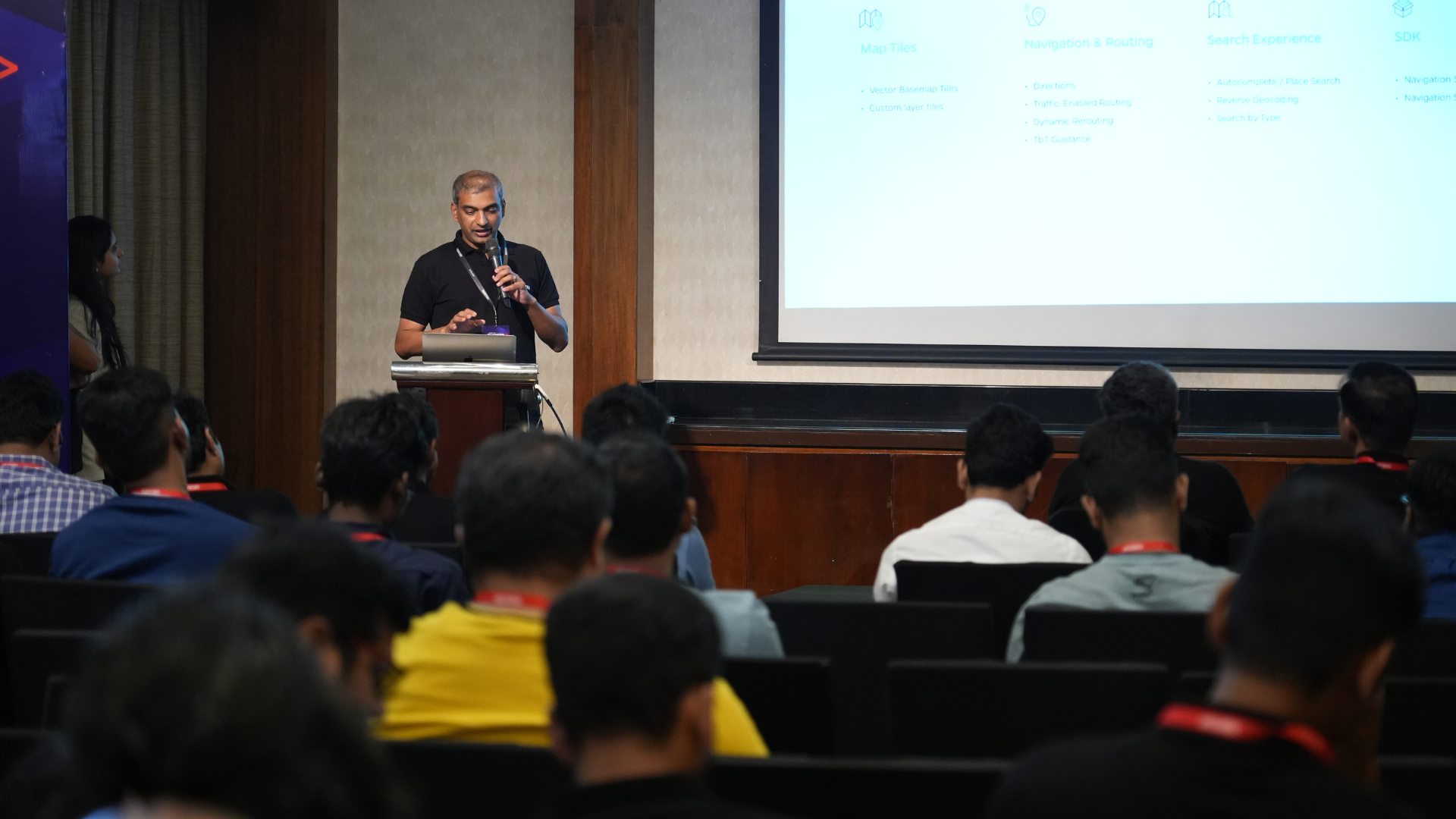
Imagine a future where the cars in India were autonomous. Ola Krutrim believes that down the lane, that vision will come true. Technology simply needs to catch up. At Dev Sparks 2024, leaders from Ola Krutrim conducted a workshop where they navigated people across the autonomous vehicle landscape, touching upon key factors such as data collection, AI advancements, sensors and various technologies. They also touched upon the challenges of building autonomous vehicle technology for India.
This was the Ola Krutrim workshop ‘Navigating India’s Future: Autonomous Technology Trends’ held at DevSparks 2024, YourStory’s tech summit. The AI startup, Ola Krutrim, conducted a series of discussions, presentations and workshops on technologies like artificial intelligence, cloud computing, autonomous technology and more. The one-hour session featured speakers from Krutrim, including Prasad Kavuri, Senior Director of Ola Maps; Srikanth Vidapanakal, Director, Autonomous Driving & Robotics, Ola Krutrim, and Himanshu Garg, Research Engineer, Autonomous Driving & Robotics, Ola Krutrim.
Ambitions vary when it comes to autonomous vehicles. While some companies are determined to build level 5 autonomous vehicles (where the car requires no human attention and can drive itself), others like comma.ai are focused on aftermarket products like neural networks that are trained on real world driving data. Finally, there are companies like Tesla that want to drive the autonomy of current and future vehicles. In this landscape, Ola Krutrim is working towards building autonomous vehicle technology for passenger vehicles (two wheelers and four wheelers) as a part of their electric vehicle programme, as well as, aftermarket products for their cabs.
The evolution of autonomous vehicles at Ola Krutrim
Before discussing Krutrim’s roadmap for autonomous vehicles, Vidapanakal discussed the inherent problems of autonomous driving technology. The biggest challenge is traffic in India, how many vehicles can typical two-lane Indian roads accommodate? However, there is some method to the madness of Indian traffic, and this is where Krutrim sees the possibility to build a highway pilot for autonomous vehicles. The pilot will include building features such as adaptive cruise control, emergency braking, lane change, collision avoidance and more.
Companies, Vidapanakal says, are taking two distinct approaches to building autonomous vehicle technology. One is a transparent system, where a series of sensors (cameras, radars, lidars, etc.) are fused together to form a bird eye view. Additionally, this approach would require a driving policy based on a neural network or through optimisation. The second approach is less transparent. It is based on imitation learning or reinforcement learning (the first involves the imitation of a set of demonstrations, while the second is learned by trial and error, as well as rewards and punishments).
Gen AI pushes autonomous driving in a new direction
Krutrim, Vidapanakal announced, is working on a vision of foundation models for autonomous driving, named A.V 3.0. The process began with A.V. 1.0, which involved perception, planning and control. The second wave of innovation at Krutrim involved end-to-end learning from a series of sensors that handles the driving policy. Unfortunately, end-to-end learning comes with a limitation of less interpretability of the decisions the neural networks were making. This is where Generative AI can help, as it illuminates the network and helps developers understand why the neural network is making a particular decision. A.V 3.0 will leverage Gen AI to ask why the network is making certain decisions, as the driving task will be defined as a language model. Currently, Krutrim is at the stage of private track testing and the next step will be public track testing (for instance, a highway) in a controlled environment before expanding into more complex driving conditions. Vidapanakal then introduced Krutrim’s vision-based autonomy stacks – a rarity in the autonomous driving landscape.
The complexity and chaos of Indian driving data
Data is at the heart of autonomous driving. Indian data, in particular, is unique, as it features everything from autos to bullock carts. Data collection in India is a challenge, says Garg, which is both complex and chaotic. These include bandwidth, hardware and sensory challenges. In order to train autonomous vehicle models, they require 360 degree from all cameras, at all angles in one instant to capture the data. Not only has Ola overcome this challenge to help with its training, this information aids in 360 degree imagery for maps, helping them build 2D, 3D and street views for their maps. Additionally, the same data enables them to create simulators to test two and four wheelers without going on the road. Data collection takes place on custom data recording vehicles, which are deployed on field and processed on the cloud. Later on, during feature implementation, inference takes place on an edge device. This brings a greater level of maturity to the features being developed.
“One of the problems for the industry is that every company that wants to be autonomous or is autonomous, that continues to collect data. Where does it end? The advancements in AI guarantee that we will continue to discover edge cases in the future. We just need a few hours of data to just very reliably drive but we’re not in that state, as far as autonomous systems are concerned. It’s an active research problem” said Vidapanakal on the challenges of data collection.
A holistic approach to building autonomous vehicle systems
Vidapanakal believes that reliance on cameras would be catastrophic for autonomous vehicles, given the different weather conditions or situations like dust on the camera. The trick is to choose the right number of sensors for the right driving conditions. The choice of sensors will vary for level 2 and level 5 vehicles and will be based on the budget.
On Tesla’s approach to building autonomous driving systems, Vidapanakal said “The belief of Tesla is that, like, cameras are all you need. What we know from Tesla’s data is that focusing on cameras is not 100% reliable. That’s why Krutrim opts for radars. Their system includes six cameras and five radars that provide rich sensor information, which can work in all weather conditions. If you want to build level 5 systems, you need more advancements in AI. These advancements mature the camera and radar based solution, to help companies achieve level 5. The current state of AI, however, necessitates lidars in autonomous vehicles.
Building two-wheeler safety features for India
In India, there is less development of safety features for two wheelers, as opposed to four wheelers. Ola Krutrim is looking to change that by developing features like adaptive cruise control, collision avoidance, reverse park assist and a blind spot alert. Another feature has to do with potholes, which are dotted across the roads in India. By collecting data from LiDARs and cameras, they can alert passengers to undulations in the road. Garg then demoed the technology powering safety features for two wheelers.
Catch all the highlights of this workshop here.







![Read more about the article [Funding alert] MoEVing closes $5M in seed capital from angels to fuel growth](http://blog.digitalsevaa.com/wp-content/uploads/2021/12/moeving-1639553095584-300x150.png)


